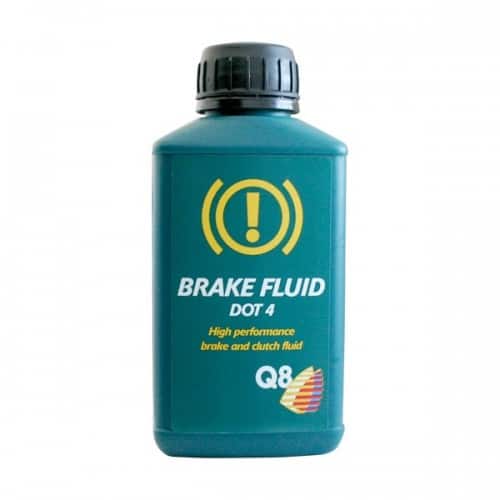
Ensuring that brake fluid remains topped up is essential. Without it, a braking system will stop functioning, putting the lives of those onboard and other motorists on the road in danger and potentially harming your vehicle. Fortunately, checking and topping up brake fluid is not tricky.
Checking brake fluid levels
Brake fluid levels should be checked at least every few months. Motorists are advised not to simply rely on their dashboard display warning lights to inform them of low fluid. Follow these simple steps.
First drive the vehicle for a short time, while braking multiple times to fill the brake system. Next, park up on a flat surface to ensure an accurate reading. Now, open the car bonnet and find the brake fluid reservoir. The reservoir is usually white in colour, with ‘maximum’ and ‘low’ and fill markers displayed. The fluid is relatively dark and should be clear to see through the container. When the fluid level falls below ‘low’ add fluid and top it up.
Motorists that find levels low when they check their levels again soon after should consult a mechanic. This scenario is commonly caused by having a brake system leak or worn brake pads
When the fluid level is higher than the “maximum”, the brake fluid could be absorbing water. Driving with water in a brake system can lead to boiling water and poor brake function. If this situation occurs, visit a mechanic and have your brake fluid replaced.
Adding brake fluid
When you discover your vehicle has low brake fluid, topping up is a simple task.
Once more, park on an even surface. Open the bonnet and clean the cap on the brake fluid reservoir if it’s dirty before removal to stop any debris falling in. Next, take off the cap and slowly add brake fluid into the reservoir until you have reached the maximum fill level marker. Now screw the reservoir cap securely back in place.
The final step is to drive your car for a short time, braking occasionally. Park once more on a flat surface and check your fluid again to ensure you have successfully filled the reservoir.
Remember that brake fluid properties can corrode paint, so avoid spilling any on the bodywork of your vehicle or within the engine compartment. If an accidental spill occurs, wipe it off immediately using plenty of water. The fluid is oily in nature, so it’s easy to tell when areas are sufficiently clean.








































